2024-03-03
Ensuring Accessibility and Inclusivity in Playground Design
The importance of accessible playgrounds has never been more recognized in our communities. These play areas are essential for fostering an environment where children of all abilities can engage in meaningful play, promoting physical and social development. By implementing innovative design principles and adhering to legal standards, playgrounds are evolving into spaces that offer equal opportunities for fun and learning.
Key highlights of this article include:
- Integrating a ground-level play component with an elevated play component is important to cater to children with various abilities.
- The role of the Americans with Disabilities Act (ADA) in shaping the standards for accessible playground design.
- Innovations in composite play structures that provide inclusive play opportunities for all children.
- Strategies for making existing play areas more accessible through retrofitting and thoughtful redesign.
- The importance of accessible routes, transfer systems, and a platform or deck area in creating a seamless play experience.
Playgrounds should be designed with every child in mind, incorporating a ground-level play component, elevated play component, and composite play structures accessible to children using mobility devices. These playgrounds not only comply with the Disabilities Act but also go beyond compliance, embodying the principles of accessible design through every play component and structure. Integrating play components attached to the ground and elevated areas within a composite play structure ensures that play areas are vibrant, engaging, and, most importantly, inclusive.
This approach to playground design acknowledges the diverse needs of children and emphasizes the importance of providing a variety of play experiences. By doing so, it supports the development of physical skills, encourages social interaction, and promotes inclusivity from a young age. Through careful planning and innovative design, existing play areas can be transformed into accessible and inclusive environments that welcome children of all abilities.
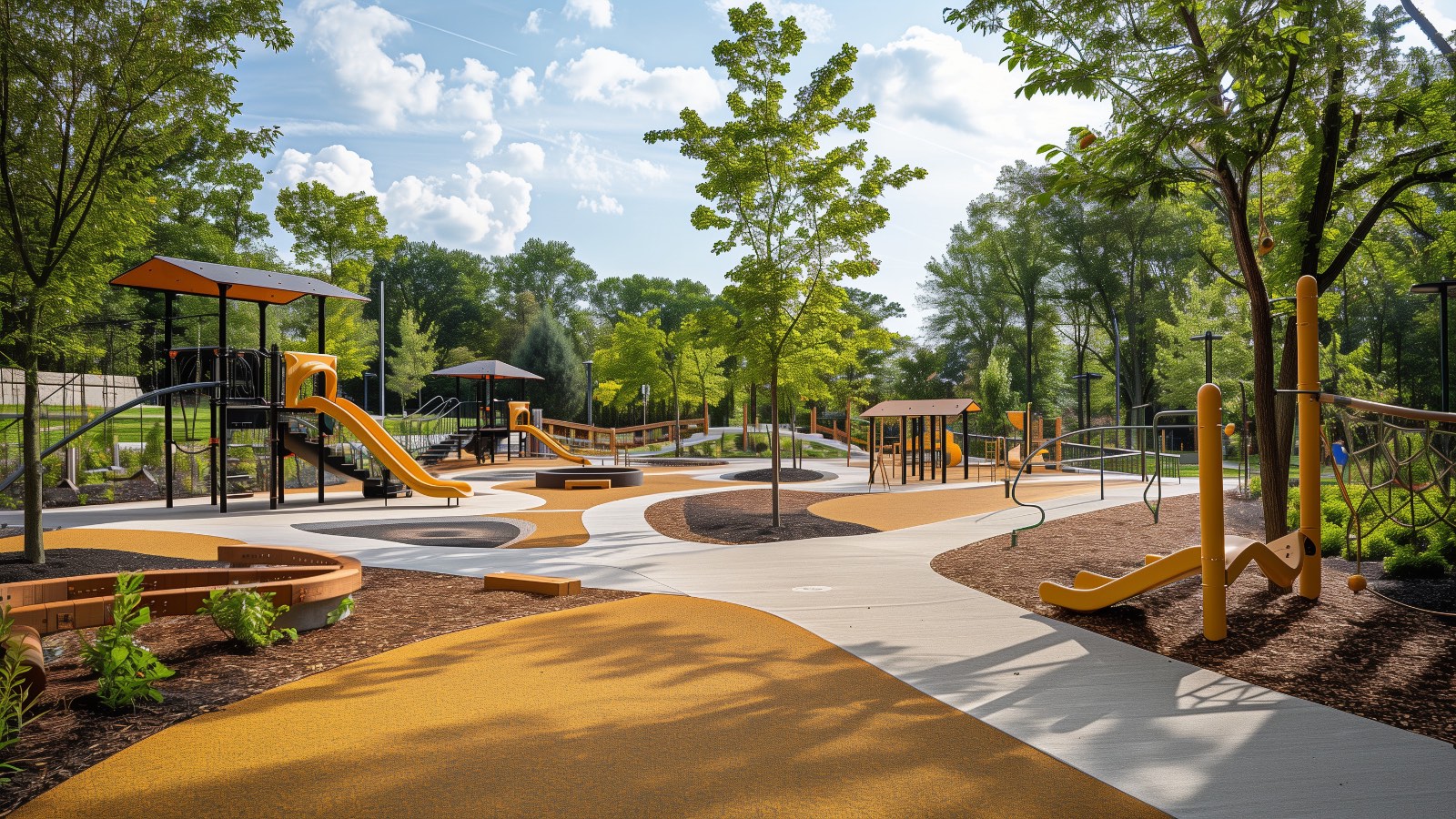

The Ascendance of Playground Accessibility
The ascendance of accessibility has marked a significant evolution in the design and creation of play spaces. This evolution is rooted in the understanding that play is a universal right, essential for the development and well-being of all children, regardless of their physical abilities. Central to this progression is incorporating ground-level and elevated play components within the play area, ensuring every child can engage in meaningful play experiences. Ground-level play components offer direct access for children with mobility challenges, while elevated play components provide the thrill of height and exploration for all users. The thoughtful integration of these elements within a playground emphasizes the shift towards more inclusive, equitable play environments.
This shift is further supported by the legal frameworks and standards set forth by legislation such as the Americans with Disabilities Act (ADA). The ADA has been instrumental in guiding the design of accessible playgrounds, mandating that play areas offer equal opportunities for play to every child. This includes the requirement for an accessible route to and within playgrounds, ensuring that children using mobility aids can navigate the space freely and safely. By defining what constitutes a ground-level and an elevated play component, the ADA provides clear directives for playground designers to create compliant and genuinely inclusive spaces.
Innovations in accessible playground design have taken these principles to new heights, literally and figuratively. Designers are now creating composite play structures that seamlessly integrate ground-level and elevated components, connected by an accessible route that invites exploration and adventure. These innovations are about meeting legal standards and reimagining what a playground can be. They reflect a commitment to creating play environments that acknowledge the diverse needs of children, promoting inclusivity and fostering a sense of belonging among all users. This holistic approach to playground design ensures that play areas are not just spaces for physical activity but are also vibrant communities where children learn to appreciate diversity and build connections with others.
Design Principles for Accessibility
The design of accessible playgrounds is guided by the principle of playground accessibility, which ensures that every individual can engage with and enjoy the play environment regardless of their abilities. This approach to design emphasizes the seamless integration of ground-level and elevated play components, ensuring that play areas are navigable and enjoyable for everyone. Accessibility goes beyond mere compliance with the Disabilities Act; it involves considering how children with various abilities interact with playground equipment, ensuring that inclusive playgrounds genuinely cater to all.
Key Elements for Accessible Playground Design:
- Ground Level Play Components: Features accessible and enjoyable without climbing or navigating steps.
- Elevated Play Components: Elements that are accessible via ramps or transfer systems, offering equal play opportunities.
- Surface Systems: Surfaces that support mobility devices, providing a stable base for all users.
- Accessible Routes: Pathways that connect play components, ensuring a continuous unobstructed path throughout the play area.
- Composite Play Structures: Integrated units providing varied play activities accessible to children of differing abilities.
The distinction between ground-level and elevated play components is critical within the playground. Ground-level play components offer direct access to play for those using mobility devices or with limited mobility, making the playground a more inclusive space. Elevated play components, considered essential for providing a diverse play experience, must include an accessible route, such as ramps or transfer systems, to ensure they are within reach of all children. This dual approach in playground design supports inclusive play, allowing children of varying abilities to choose how they engage with the playground equipment, thereby promoting autonomy and self-confidence.
Furthermore, developing composite play structures with elevated and ground-level components attached via an accessible route exemplifies the advancements in inclusive playground design. These structures are designed to provide various play opportunities, from sensory play to physical challenges, ensuring that every child finds something engaging. By incorporating accessible play areas, inclusive equipment, and ensuring equal access to all play activities, designers can create a play space that truly accommodates the community’s diverse needs. Compliance with ADA requirements not only ensures the legal accessibility of public facilities but also promotes a more inclusive society where children of all ages and abilities can play, learn, and grow together in a safe and welcoming environment.
Legal and Design Standards for Accessibility
The legal and design standards for accessibility of playgrounds serve as a vital foundation for creating inclusive recreational spaces that cater to all children, including those with disabilities. Grounded in the principles of the Americans with Disabilities Act (ADA), these standards aim to remove barriers and create equal play opportunities for every child. The ADA’s influence extends to playground equipment, ensuring that ground-level and elevated play components are accessible to children with various abilities. This includes the requirement for playgrounds to have accessible routes to and between play components, enabling children to use mobility devices to navigate the play area freely. By adhering to these standards, playgrounds become spaces where inclusivity is not just a goal but a reality.
Critical aspects covered by the ADA and design standards include:
- Accessible Play Components: Ground-level and elevated play components must be reachable and usable by children with disabilities.
- Composite Play Structures: Structures integrating various play components should offer inclusive play opportunities, with elements like ramps and transfer platforms facilitating access.
- Surface Systems: The selection of surface materials is crucial, with requirements specifying that surfaces must be firm, stable, and slip-resistant to accommodate mobility devices.
- Elevated Accessible Routes: Ramps and transfer systems must provide safe and effective access to elevated components, with specific guidelines on slope and width to accommodate users of varying abilities.
These standards also emphasize the importance of continuous and unobstructed paths connecting different parts of the play environment, ensuring that children can move freely between activities. This connectivity is crucial in composite play structures, which consist of multiple play elements designed to engage children in various physical and sensory experiences. The design of these structures, along with their associated accessible routes, must consider the needs of children with disabilities from the planning stage to implementation. This forward-thinking approach guarantees that newly constructed or altered play areas offer diverse play options that are inviting and readily accessible to all children, regardless of their physical capabilities.
The standards advocate for including sensory play components and equipment that support children with sensory processing disorders or other cognitive disabilities, making inclusive playgrounds a multisensory experience. The guidelines ensure that play areas are equipped with various play types, from tactile and auditory to visual, offering a rich, engaging experience for children with different interests and needs. The aim is to create a play space that encourages exploration, learning, and social interaction in a safe and welcoming environment. Through compliance with these legal and design standards, playground designers and communities can construct inclusive playgrounds that promote equality, enrich childhood experiences, and foster an inclusive society from the ground up.
Innovations in Accessible Playground Design
In playground design, innovations that enhance accessibility have transformed play areas into inclusive environments where children of all abilities can explore, learn, and grow together. One of the most significant advancements is the development of composite play structures. These structures are ingeniously designed to integrate ground-level and elevated play components, offering diverse activities within a cohesive unit. This approach maximizes space and ensures children with different abilities have equal opportunities to participate in various play activities. The concept of the composite play structure, consisting of multiple accessible routes and play components, marks a departure from traditional playground designs, focusing instead on creating a universally engaging play environment.
Key innovations in accessible playground design include:
- Composite Play Structures: These multifaceted structures combine several play elements at ground level and elevated, interconnected by accessible routes.
- Accessible Routes within Play Structures: Ensuring that every child, regardless of ability, can navigate through and engage with the play structure.
- Integration of Ground-Level and Elevated Play Components: This design strategy allows children to choose how they engage with the playground, promoting inclusivity and choice.
- Variety in Play Components: Incorporating various play components within these structures to cater to different interests and developmental needs.
Further innovation is seen in the thoughtful design of an accessible route that connects the various components of the play area. These routes are carefully planned to accommodate children using mobility devices, ensuring the path to fun is as barrier-free as possible. The design of these routes considers not just the physical accessibility but also the sensory and cognitive needs of all children, aiming to provide a stimulating and enriching play experience. By considering elevated play components as integral parts of the play structure, designers have challenged the conventional notion of accessibility, ensuring every child can experience the thrill of play from different vantage points and heights.
Moreover, the innovations extend to the materials and technologies used in creating these accessible playgrounds. Using durable, safe, and sensory-friendly materials enhances the play experience while ensuring safety and comfort. Designers also leverage technology to add interactive elements to playgrounds, making play more engaging and educational. This holistic approach to playground design not only meets the physical accessibility requirements but also enriches the play experience, making it more inclusive and enjoyable for all children. Through these innovations, playground designers are redefining what it means to create play spaces that are truly accessible, where every child, regardless of ability, can delve into the world of play without limitations.
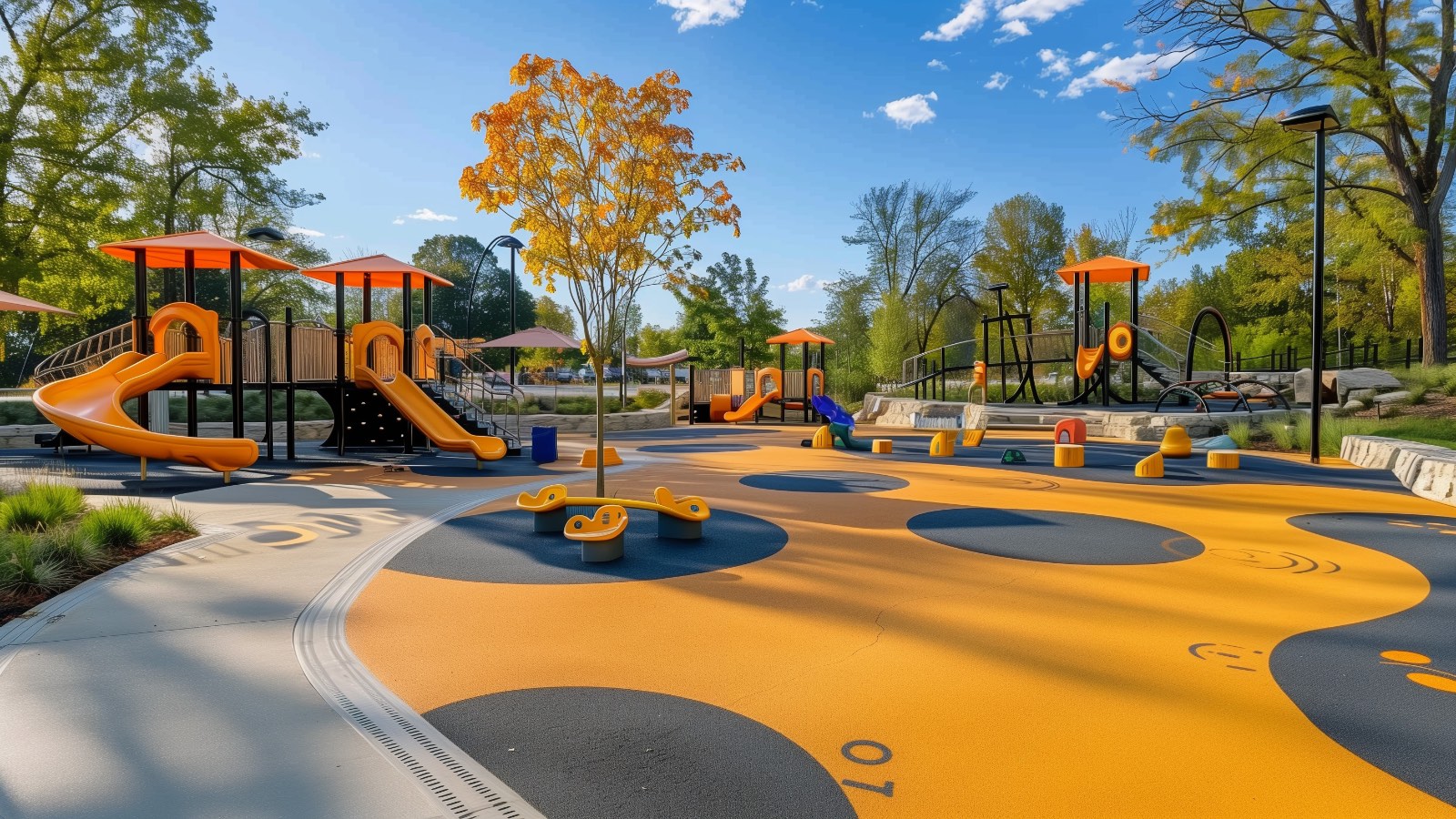
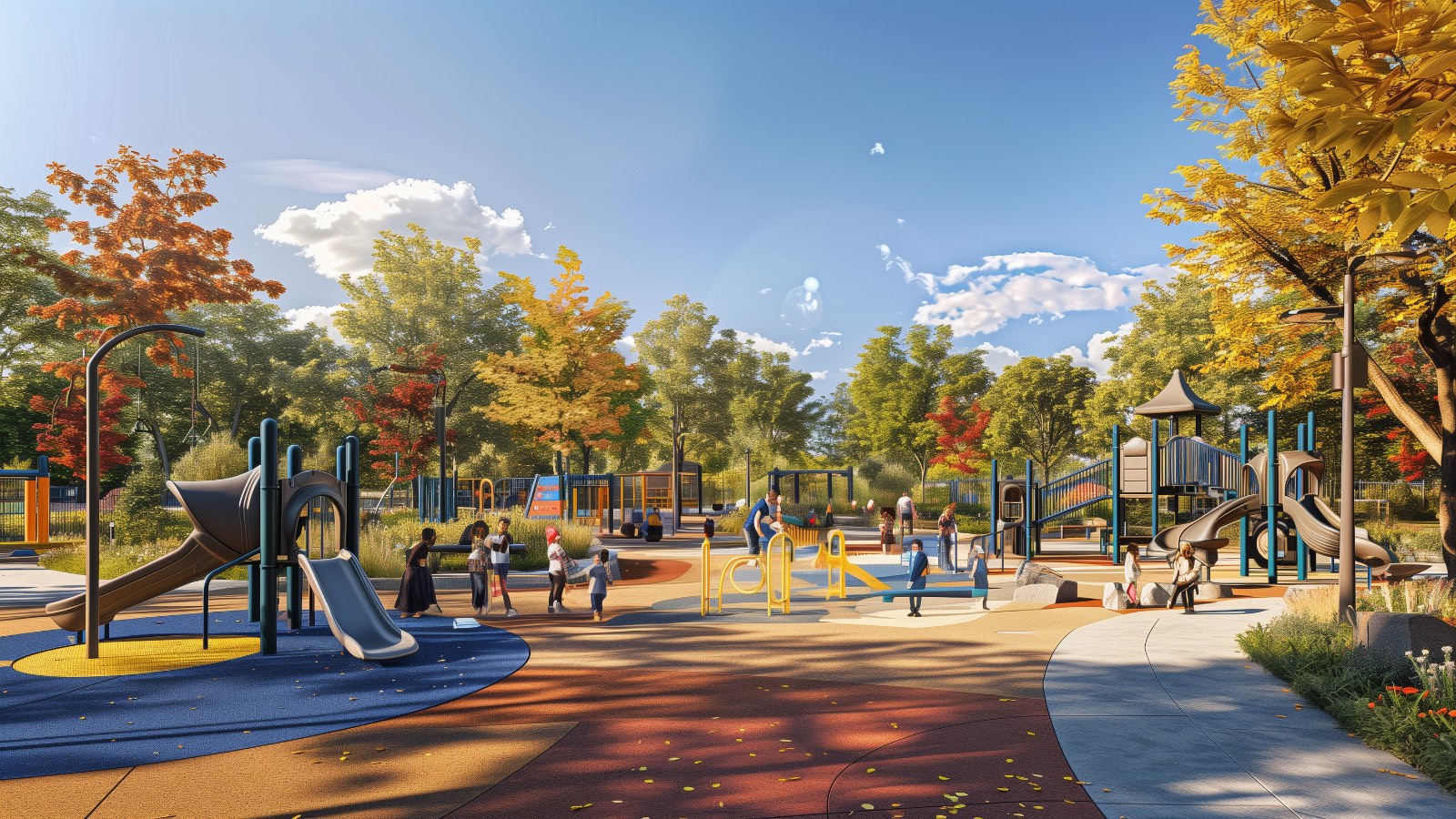
The Inclusivity Wave in Playground Design
The wave of inclusivity sweeping through playground design is reshaping these spaces into hubs of diverse activity that welcome every child. This movement goes beyond mere physical accessibility; it embraces the full spectrum of play and interaction that a truly inclusive playground offers. By integrating various play components, including ground-level and elevated elements, designers craft play areas that cater to children with a wide range of abilities, interests, and developmental needs. Ground-level play components ensure that children who face mobility challenges can engage in play without barriers, while elevated play components add an exciting dimension of height and exploration for all users, fostering an environment where every child is valued and included.
The concept of the inclusive playground is embodied in the development of composite play structures. These innovative structures blend various play components, attaching ground-level elements with elevated ones, ensuring a cohesive play experience. Such designs are pivotal in promoting inclusivity, providing seamless transitions between play activities. This approach allows children to choose how they engage with the playground, encouraging exploration and interaction in a welcoming space. Integrating diverse play components within a single composite structure signifies a shift towards more thoughtful, inclusive playground designs that acknowledge and celebrate the differences among children.
Moreover, the emphasis on inclusivity in playground design extends to carefully considering how play components are attached and how accessible routes connect the entire play area. This careful planning ensures that children can move freely and safely throughout the playground, regardless of their physical abilities. By offering various play options within an accessible and thoughtfully designed space, inclusive playgrounds become places where children can learn about empathy, cooperation, and respect for diversity through the universal language of play. This inclusive approach not only enriches the play experience for children with disabilities but also enhances the play environment for all children, fostering a community spirit and encouraging social inclusion from an early age.
Ways to Add Inclusivity Elements to Playgrounds
Integrating various play elements that cater to diverse abilities and interests is crucial to creating truly inclusive playgrounds. Ground-level play components play a pivotal role, ensuring that children of all mobility levels can play without assistance. These components include sensory boards, interactive panels, and play structures that are accessible at ground level, allowing children using wheelchairs or other mobility aids to participate fully. Moreover, incorporating ground-level play components alongside traditional playground elements encourages interaction among all children, fostering a sense of community and understanding from a young age.
Essential inclusivity elements for playgrounds include:
- Ground-Level Play Components: Ensuring easy access for children with varying mobility needs and promoting independent play.
- Elevated Play Components with Accessible Routes: Offering inclusive play experiences at different heights, accessible via ramps or transfer platforms.
- Varied Play Options: Providing various play activities to cater to different interests, abilities, and sensory needs, ensuring that every child finds something engaging.
- Sensory Play Areas: Designing specific zones that stimulate different senses is beneficial for all children, especially those with sensory processing disorders.
In addition to ground-level components, including elevated play components accessible via ramps or other means is vital for an inclusive playground. These elevated elements allow children to experience the joy of height and perspective, which are integral to play. Accessible routes to these elevated components are designed to be wide enough for mobility devices, with gentle slopes that are easy to navigate. This ensures that children with mobility challenges can reach these areas and supports caregivers and parents who might need to accompany their children. By thoughtfully considering the placement and accessibility of elevated play components, playgrounds can offer varied and enriching experiences for all users, making playtime inclusive and enjoyable for children with diverse needs.
Creating an inclusive play area involves more than physical accessibility; it’s about providing various play options that cater to the full spectrum of children’s needs and preferences. This inclusivity extends to play components designed for social interaction, solitary play, physical activity, and sensory stimulation. By offering a play environment that includes both ground-level and elevated components, accessible routes, sensory play areas, and a variety of play options, playgrounds can become spaces where all children feel welcomed and valued. This approach not only enhances the play experience for children with disabilities but also enriches the play environment for all children, promoting inclusivity, empathy, and social skills from an early age.
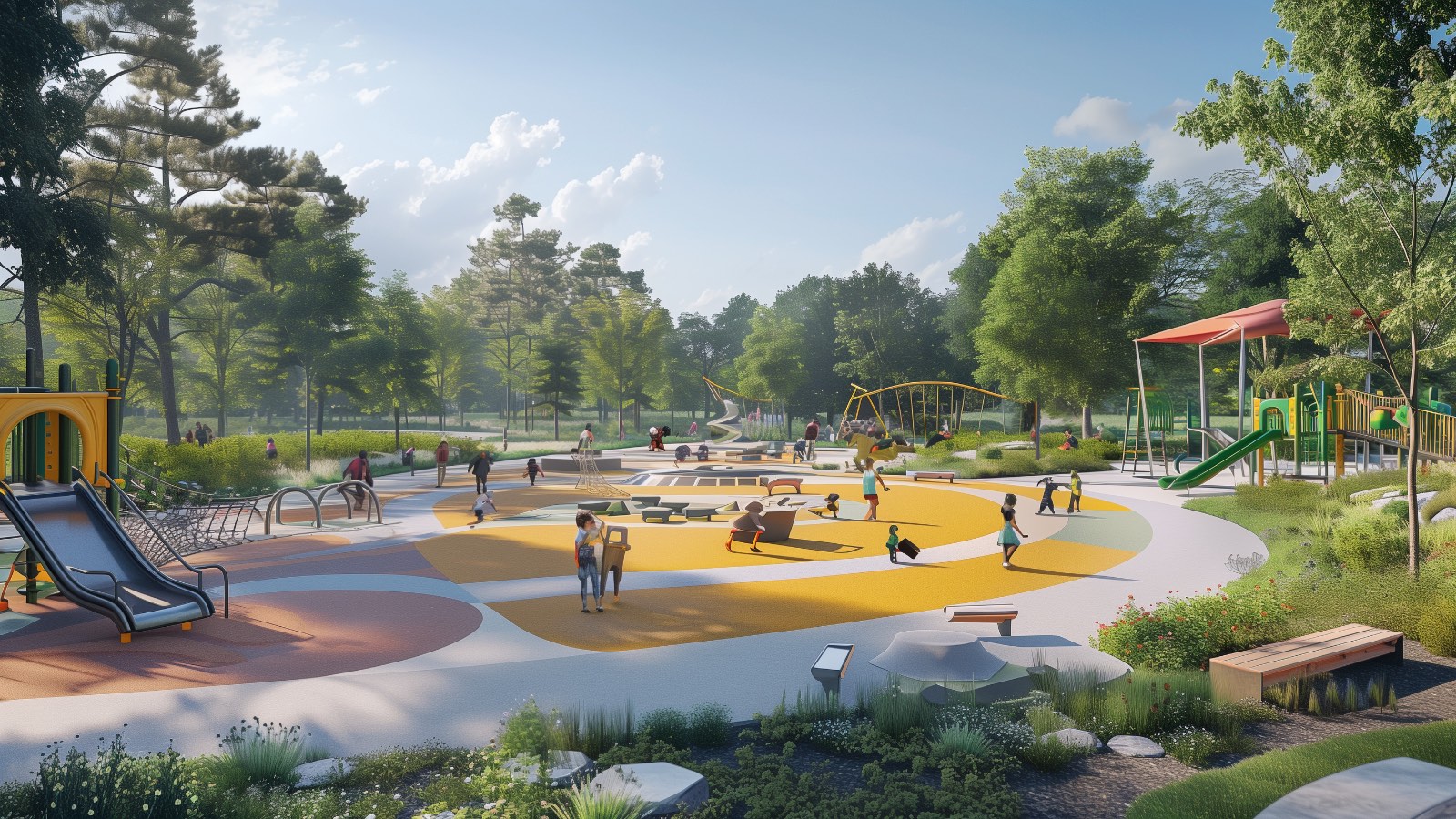
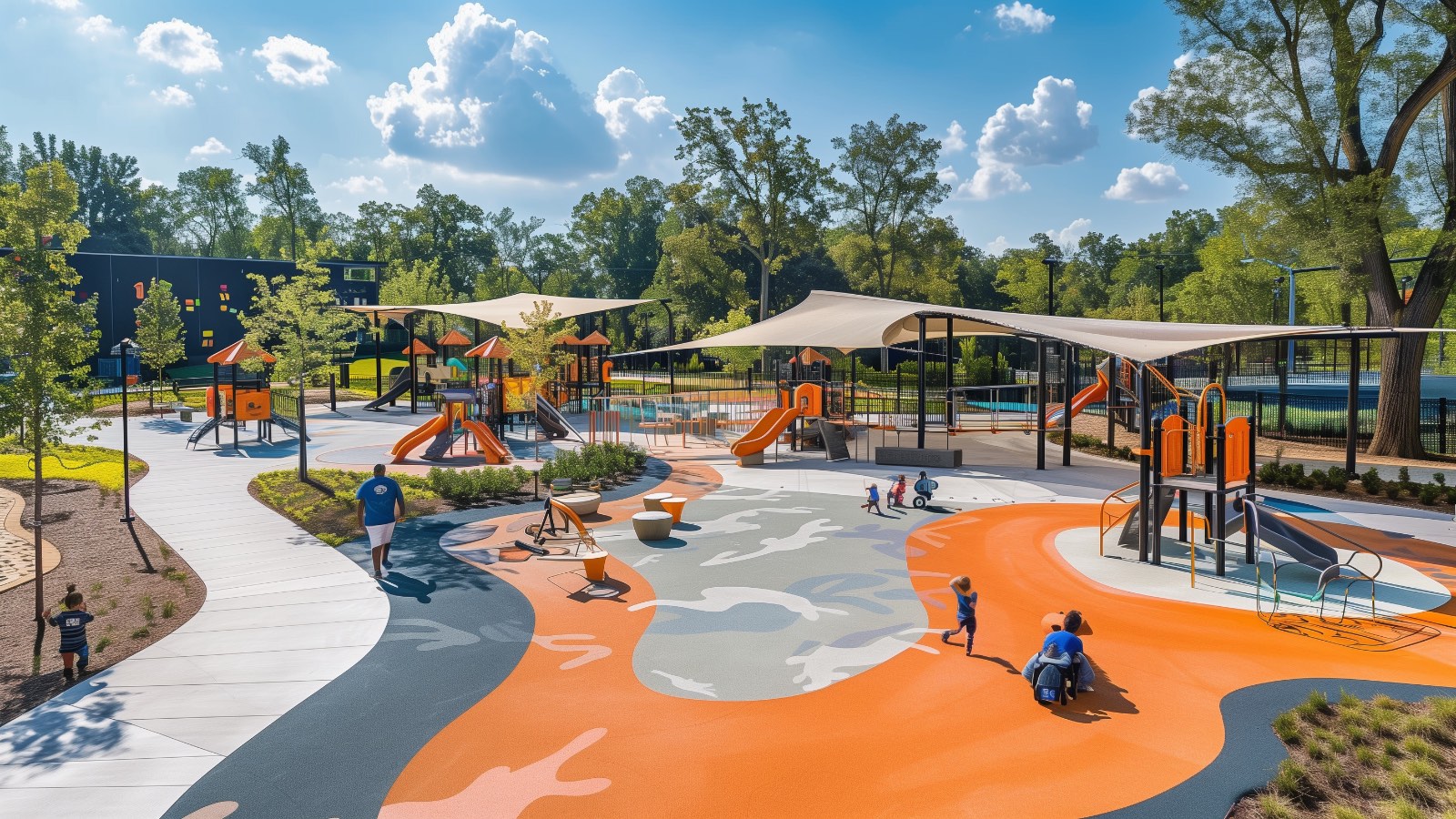
The Future of Playground Design
The evolution of playground design towards greater accessibility and inclusivity is a testament to our society’s growing recognition of the importance of play for all children. Innovations in playground accessibility, such as integrating ground-level and elevated play components, ensure that children of varying abilities can enjoy the stimulating and enriching play experience. This shift towards inclusive playgrounds, underpinned by the principles of the Americans with Disabilities Act (ADA), highlights the commitment to creating environments where joy, learning, and growth know no bounds. By focusing on accessible play components, composite play structures, and carefully designed play areas, playground designers set a new standard for recreational spaces welcoming to every child.
Inclusive playgrounds, featuring a mix of ground-level and elevated play components, offer diverse activities that cater to children with and without mobility devices. Using composite play structures, consisting of various play components attached through accessible routes, enables children to explore and engage in play seamlessly. These structures, along with the implementation of surface systems that support the use of mobility devices and the inclusion of sensory play elements, are crucial for creating a play environment that is accessible and enjoyable for all. The emphasis on ensuring equal access through elevated accessible routes and providing transfer systems further demonstrates the dedication to inclusive play design. This approach not only meets the requirements of the ADA but also fosters a sense of community and belonging among children of diverse abilities.
As we look to the future, the continued innovation in accessible and inclusive playground design promises to create spaces that are not just playgrounds but vibrant communities where children can learn, grow, and thrive. The principles of accessible design and the commitment to inclusivity pave the way for playgrounds that promote physical activity, social interaction, and environmental awareness among the next generation. These playgrounds will entertain, educate, empower and inspire, ensuring that every child, regardless of ability, can experience the joy and freedom of play. Through thoughtful design and a commitment to inclusivity, playgrounds can become places where children of all ages and abilities come together, celebrating the universal joy of play and fostering an inclusive community spirit from an early age.














